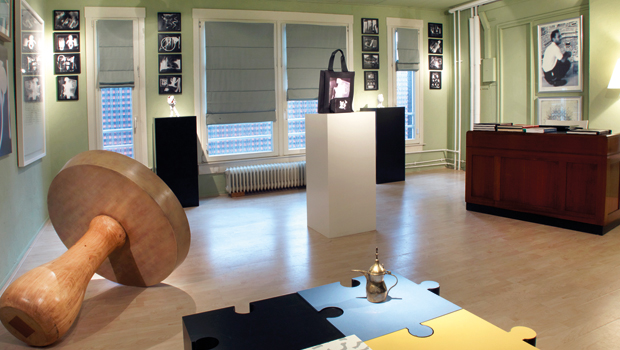But, interestingly so, the Greenbox Museum of Contemporary Art From Saudi Arabia is located in Amsterdam (yes!) and professes to be little more than just a humble “white cube” of museum space. And no, the founder is not Saudi. Not one sharing a remote gene pool from the Arabian Peninsula either, albeit, a loyal patron who is bringing a fair amount of the modest quality art produce from Arabia to himself.
Meet Aarnout Helb, Greenbox Museum’s 47-year-old Dutch founder and curator and a self-confessed historian by nature.
Armed with a degree in law by nature of inherited family education (courtesy: three great-grandfathers!), a chance detour from law school one day landed him at a second year art history class in Florence, and he has since entertained a profoundly serious (pun intended) interest in the arts.
What’s more amusing is the staggering support the museum’s Facebook fan page enjoys with over 450,000 and odd followers mainly from Islamic and other Muslim majority nations like Indonesia, India and Egypt, leaving popular museum biggies, like the British Museum, Tate and Guggenheim, hankering behind in numbers.
We were interested in learning why and what prompted this man from the distant Netherlands to build a museum collection of arts from the Arabian Desert.
The museum was not founded, but found. I discovered a vacancy and filled it myself, and I’m still in the process of finding out what it all means. The way I discovered it was through a metamorphosis. I had a caterpillar question and turned it into a butterfly.
We know little about Islam and not a word of Arabic. I met an imam somewhere and got into an entertaining, unsolved legal conversation with him about the source and nature of the rules that govern visits to Makkah. I then started looking for what the Qur’an said on this issue and got interested in the yellow cow, which was “bright in its color, pleasing the beholders” (a verse from the Qur’an). When I Googled this for its meaning in 2008, I discovered Ahmed Mater, who had made an artwork about this ancient story. I was charmed to discover such an intelligent artist from Saudi Arabia, and from this point on, I continued to research and collect the art of Saudi Arabia. What will happen with the Greenbox Museum in the future? We’ll see. Perhaps I will say it was all just an art installation by itself and Mater was my paint.
It symbolizes the wish not to be another White Cube museum collecting what is en vogue in London or New York but reflects my focused curiosity for something that might matter to the world. It turned green simply because in the corner of my house, I have a green lamp and a painting of a very green Dutch landscape. I somehow think that is a pleasant corner. It was not to advertise either the Saudi flag or any religious color.
The way people got scared of Muslim immigrants in the Netherlands post 9/11 did affect me and that needs to be changed. The museum is not about Arabs, but about those who share their reverence for the Two Holy Mosques. Is that not the Muslim’s most treasured position? It is from this position also that Saudis have a natural relationship with the world outside Saudi Arabia. There are many Muslims and countries around the world who have and will keep a continued relationship with Makkah.
I do not promote. I try to inform about visual art in KSA. My biggest problem is the language. I have no knowledge of Arabic and Google Translate often produces unintelligible poetry. Considering the modest size of the museum, it’s a way of making people understand how large the mental space is in which this house is being built. Perhaps that will create a better understanding of the value of making art. Good museums have no end, but they try to inform and unify as many people as possible.
Art should have a strong conceptual side to it and produce many questions in my mind. There should be a touch of anger and fun also. Art is not science, neither is it religion, and you can’t eat it. A bit of beauty and production quality do help, but the absence of such features need not embarrass a curator too much.
Every artist who picks up an idea from the Islamic culture and revitalizes it. This has nothing to do with maintaining traditions, but with revisiting the origin of things that matter and returning value to them.
Your guess is as good as mine. Perhaps it’s a spin off from the Dubai, Abu Dhabi and Qatar competition, but the selling abilities of artists depend on the quality of their work.
That should not be necessary. Restrictions serve the artist. Most artists restrict themselves to a canvas of less than a square meter and many to working in black and white only.
I do not advertise the museum in papers or magazines, but by word of mouth. Interested experts, students and international visitors drop by, and every month is more interesting than the previous one. Last week, the national radio broadcast a 45-minute documentary about the museum and a youth magazine did a story and that brought in new faces. Almost always, people are pleasantly surprised.
Let us first pray that the killing stops in the region.
Perhaps demonstrate that many Muslims around the world enjoy what they do even more than the crowd at Sotheby’s, Christies and Art Dubai.
:










